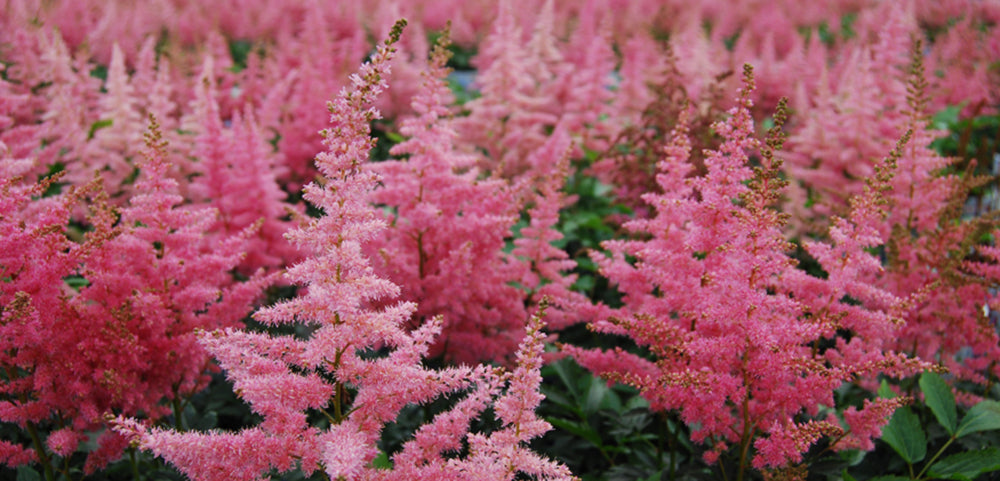Astilbe (Astilbe spp.)
Astilbe Plant Features
Electrify shady spots in your garden with astilbe. This shade-garden classic is easy to grow and produces feathery plumes of small flowers in a host of colors including pink, red, white, peach, lavender, and purple. Some even sport bronze foliage that adds to the color show. Although there are dwarf forms of astilbe, most varieties grow 18 inches tall and bloom in mid-spring. Astilbe is resistant to deer and rabbits and are one of the few perennials that grows well under black walnut trees. You can also cut the flower stalks for indoor bouquets. Hardy from zones 3-8.Astilbe Questions?
Email us if you have questions about astilbe. One of our perennial gardening experts will get back to you.
Astilbe Growing Instructions
Astilbe is an excellent choice for shaded borders and woodland edges. They require rich, slightly moist soil that doesn't dry out completely. To keep them in top form, mulch with several inches of compost or shredded bark or leaves to maintain soil moisture. In a shady, moist spot, astilbe also makes a terrific ground cover. Use dwarf forms in pots and planters or to edge a garden path. Astilbe is not intended for human or animal consumption.-
Water
Constantly moist soil
-
Light
Outside: Part sun
Outside: Shade
-
Colors
Pink
Purple
Red
White
-
Special Features
Attracts butterflies
Attracts hummingbirds
Deer/rabbit resistant
Groundcover
Complement your Astilbe
HostaA classic partnership, hosta and astilbe will transform any shady garden into a color festival.
Hellebore
Brighten dark places in your landscape by pairing hellebore with astilbe. Both, like rich, slightly moist soil.
Ligularia
Like astilbe, ligularia thrives in shady locations with moist soil. They make a great pair planted together.


